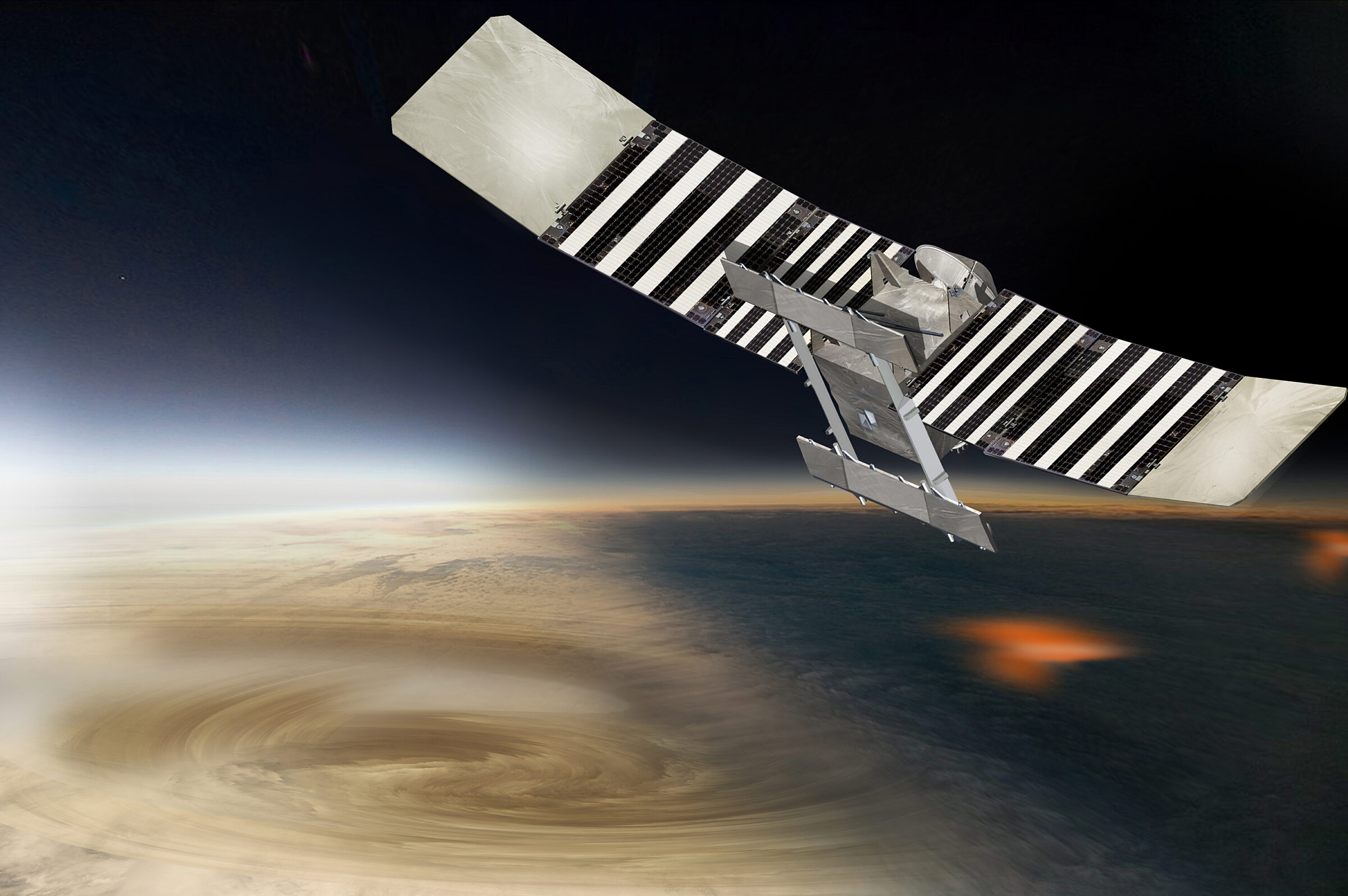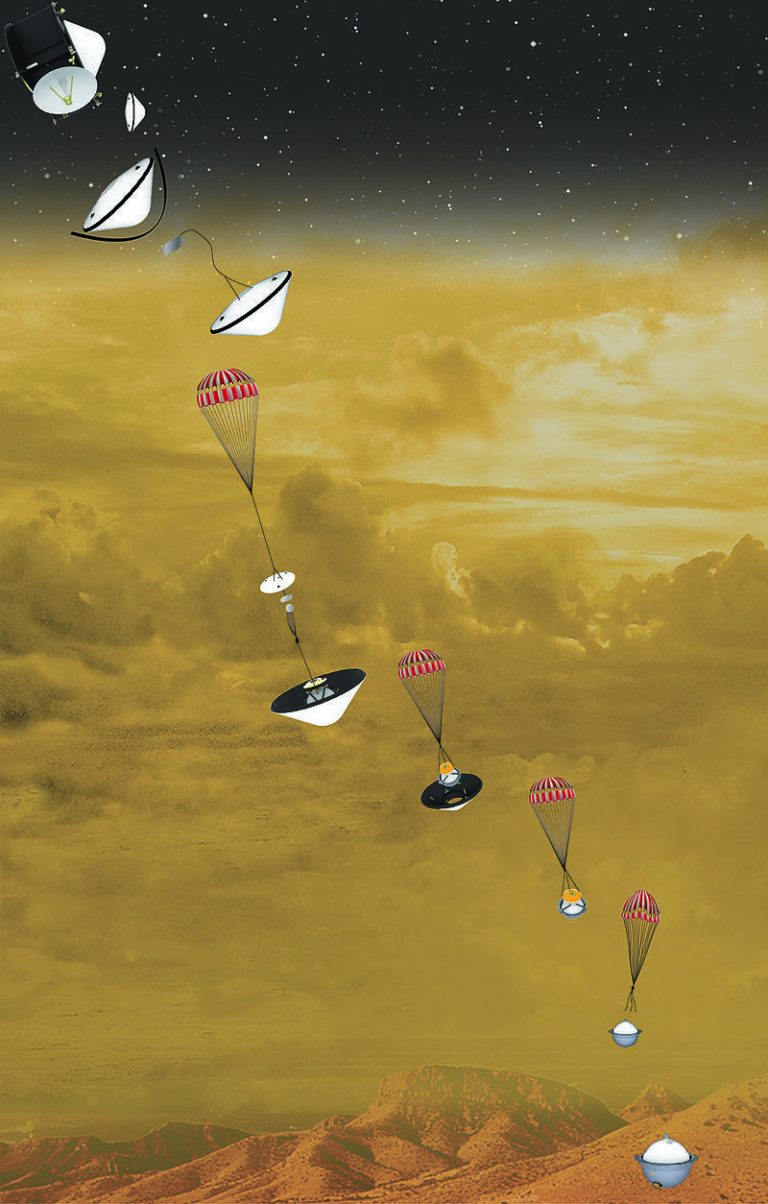Van Kane • Dec 08, 2016
Countdown to the Next NASA Discovery Mission Selection
This article originally appeared on Van Kane's blog and is reposted here with permission.
If NASA’s managers hold to their schedule, we will learn sometime this month what NASA’s next planetary mission will be. This will bring to a close a two-year process that saw 27 teams of scientists and engineers propose missions for the agency’s Discovery program, followed by a winnowing of the field to five finalists. Out of the process should come the selection of one (and if the gods smile, two) missions that will launch in the early 2020s to study either Venus or the asteroids.
The Discovery program funds NASA’s low cost planetary missions (typically $600–700 million for all costs) to allow for more frequent missions. Nine missions have successfully flown through this program to solar system destinations as diverse as Mercury, our moon, Mars, several comets, and several asteroids. (For those who note that the next mission will be the 13th selection, one previous mission failed, another is the Kepler telescope observing planets around other stars, and one is still in development.)
In the first round of this competition, the agency’s managers evaluated the proposals on how compelling their science would be and on their engineering and cost feasibility. This led to the selection of the five finalists:
The Deep Atmosphere Venus Investigation of Noble gases, Chemistry, and Imaging (DAVINCI) mission would use an entry probe to measure the trace gases in that planet’s atmosphere to study the evolution and current state of the planet, including recent volcanic activity. It would also image the surface of one of the continent-sized highlands known as tesserae.
The Lucy mission would perform flybys of several of the Trojan asteroids that share the orbit of Jupiter. These compositionally diverse bodies are believed to be remnants delivered to their current locations from across the early outer solar system. Exploring these worlds would help us better understand the range of conditions and orbital dynamics of the early solar system.
The Near Earth Object Camera (NEOCam) mission would use a space telescope to both discover new asteroids (especially those with orbits near Earth’s) and characterize a multitude of know asteroids. The results would be a massive database that could be mined to explore the range of asteroid sizes, compositions, and orbital dynamics to study these worlds as entire populations.
The Psyche mission would orbit the asteroid of the same name, which is the largest metallic world in the solar system. This body may be the exposed remnant center of a protoplanet, in which case it is our only opportunity to explore the core of a world directly. Or Psyche may be an asteroid that formed close to the early sun before later being flung into the main asteroid belt.

The Venus Emissivity, Radio Science, InSAR, Topography, and Spectroscopy mission (VERITAS) mission would remap the surface of Venus using radar at much higher resolution than the 1989 Magellan mission. It would also conduct the first global mapping of the composition of the surface.
(In a previous post, I provided more detailed summaries of the goals of each of these proposed missions.)
The teams proposing these finalists have had approximately a year to refine their proposals. The evaluation of the final proposals is reputed to be a tough, rigorous examination looking into all the details for any flaws. Could all the science goals be met? Are there any flaws in the design or proposed testing procedures? Could the mission be implemented within budget? Do all the key personnel proposed for the mission have the experience to execute the tasks assigned to them?
The final evaluations are delivered to NASA’s Associate Administrator for Science, Thomas Zurbuchen, who will make the final decision on which mission to fly. Assuming that more than one proposal survives the technical evaluation wringer, he may include factors such as his judgement of which scientific questions are more compelling or which mission would best balance the overall planetary program (for example, NASA hasn’t launched a mission to Venus since the late 1980s but has launched three asteroid missions since then).
It is possible that Dr. Zurbuchen will announce two missions to fly. When the list of finalist proposals was announced, NASA stated that a second mission might be selected if more than one passed the final review process and sufficient funding was expected in future budgets. Choosing two missions from a single competition would make it easier for NASA to meet its goal of four to five Discovery launches per decade. (The competitions are expensive and time consuming for both the planetary community and NASA.) As recently as this summer, the head of NASA’s planetary science division said that his goal was to make the case for two selections, but statements by other NASA managers have sounded more cautious.
At least two recent events weigh, in my opinion, against a second selection. First the Discovery mission in development, the Mars InSight geophysical station, experienced development problems and will need an additional $154 million to prepare for launch. Much of that money may come from the Discovery program’s budget, reducing funds available for future missions. Second, the new president elect is promising both massive tax cuts and massive new spending on infrastructure. Affording that program may lead to severe budget cuts elsewhere in the federal budget, including at NASA. Budgetary caution may be the smart move.
While NASA’s managers likely will have found it hard to select from a field of excellent candidates, among space enthusiasts there may be a clear favorite. For the past year, my blog site has posted a poll asking readers to select their personal favorites. VERITAS was the clear favorite (48% of votes) followed by Psyche (19%), DAVINCI (14%), Lucy (9%), and NEOCAM (7%). (The poll also asked for votes for a second mission, should one be selected, and the results were similar.) I am surprised that the votes are not more evenly distributed – all the proposals are scientifically compelling. Psyche and Lucy, for example, would be missions of exploration to never before visited classes of worlds. This poll likely represents the personal preferences of planetary exploration enthusiasts (although members of the professional planetary exploration community also read the blog and may have voted), and therefore probably don’t represent the evaluation weightings that NASA’s managers will apply. (So far, over a number of mission selections, my personal favorite proposals have been selected perhaps about 25% of the time.)
In the next few weeks, we are likely to learn which of these proposals will be NASA’s newest approved mission, or missions. Whichever one is chosen, it will add significantly to our understanding of the solar system.
Let’s Go Beyond The Horizon
Every success in space exploration is the result of the community of space enthusiasts, like you, who believe it is important. You can help usher in the next great era of space exploration with your gift today.
Donate Today

 Explore Worlds
Explore Worlds Find Life
Find Life Defend Earth
Defend Earth





